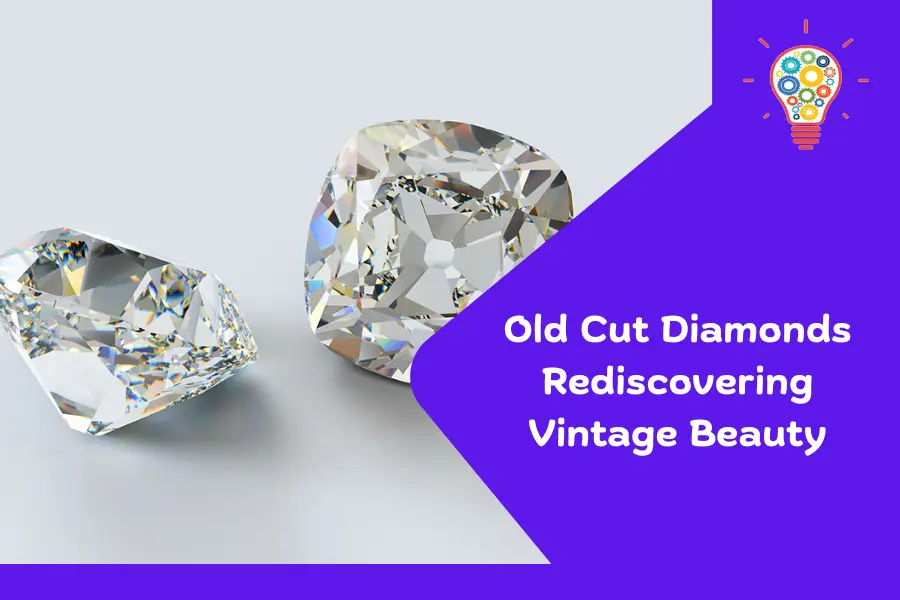Old cut diamonds, also known as antique or vintage cuts, were crafted before the early 20th century. These gems have larger facets and distinctive shapes compared to modern cuts, reflecting the artistry and craftsmanship of their time. Old cuts were created when candlelight was the primary source of illumination, influencing their design to maximize beauty in softer light.
Table of Contents
The Appeal of Vintage Cuts
Old cut diamonds are valued for their individuality. Unlike modern diamonds cut to maximize brilliance, old cuts were shaped by hand, resulting in subtle variations. Collectors and jewelry enthusiasts seek these diamonds for their unique characteristics, including their warmer appearance and the visible craftsmanship in each stone.
Some lab created diamond manufacturers now recreate old cut styles using modern technology. These companies aim to capture the essence of antique diamonds while offering the benefits of lab-grown gems, such as ethical sourcing and consistent quality. This fusion of old-world aesthetics and modern production techniques is creating new possibilities in the diamond market.
Types of Old Cut Diamonds
Old cut diamonds come in several styles:
- Rose cut: dating back to the 1500s, with a flat bottom and a domed top with triangular facets. This cut resembles a rose bud and was popular until the late 19th century.
- Old mine cut: popular in the 18th and 19th centuries, featuring a squarish shape with rounded corners and a high crown. It has a small table and a large culet, giving it a distinctive look.
- Old european cut: developed in the late 19th century, with a circular outline and a smaller table. It’s the predecessor to the modern brilliant cut and features 58 facets.
- Cushion cut: a softly square or rectangular shape with rounded corners, popular throughout the 19th century. It combines the old mine cut with a more rounded shape.
Light Performance and Visual Appeal
Old cut diamonds perform differently in various lighting conditions. They often exhibit a softer glow, particularly in candlelight or low-light settings. This light performance is due to their larger facets and higher crowns, creating a different pattern of light and shadow within the stone. The result is a more subtle, romantic sparkle compared to the bright flashes of modern cuts.
Historical Significance and Collectibility
Old cut diamonds are valued for their historical significance. Each stone potentially adorned jewelry worn during historical events or by notable figures. This connection to the past adds value beyond their physical characteristics. Collectors often research the provenance of these stones, tracing their history through different owners and time periods.
Grading and Evaluation Challenges
Evaluating old cut diamonds requires a different perspective than modern cuts. The GIA and other grading laboratories have developed specific criteria for these antique stones. Factors such as symmetry and proportions are viewed more leniently, acknowledging the limitations of historical cutting techniques. The color and clarity grades are applied similarly to modern diamonds, but the cut grade is often omitted or adjusted to account for the unique characteristics of old cuts.
Market Dynamics for Old Cut Diamonds
The market for old cut diamonds presents opportunities and challenges. These stones can sometimes be found at lower prices than modern equivalents, as they may not meet current cut standards. However, well-preserved antique diamonds, especially in larger sizes, can be more expensive due to their rarity. The market is influenced by factors such as historical significance, condition, and the current trend towards vintage aesthetics in jewelry.
Incorporating Old Cuts into Modern Jewelry
Approaches to using old cut diamonds in modern jewelry include:
- Resetting antique stones in contemporary settings, creating a unique blend of old and new.
- Restoring original pieces, maintaining their historical integrity while making them wearable for modern use.
- Creating new pieces that mimic antique styles, using either genuine old cut diamonds or modern recreations.
Jewelers specializing in vintage pieces often develop specific techniques to work with these unique stones, ensuring their preservation and showcasing their distinctive qualities.
The Evolution of Diamond Cutting
The transition from old cut to modern brilliant cuts represents an evolution in diamond cutting technology and understanding of light performance. This progression was driven by advancements in optical science and the development of more precise cutting tools. The invention of electric lighting also played a role, as diamonds needed to perform well under brighter, more direct light.
In 1919, Marcel Tolkowsky published work on diamond proportions, laying the foundation for the modern round brilliant cut. His calculations aimed to maximize light return and brilliance. Tolkowsky’s work marked a shift towards a more scientific approach to diamond cutting, influencing the industry’s standards for decades to come.
The Resurgence of Interest in Old Cuts
The renewed interest in old cut diamonds reflects a trend towards vintage aesthetics in jewelry and fashion. Consumers are drawn to the romantic qualities of these stones, appreciating their unique character and the skill required to create them. This trend is part of a broader movement valuing craftsmanship and individuality in luxury goods.
Old cut diamonds appeal to environmentally conscious consumers. Choosing a vintage stone avoids the environmental impact of new diamond mining. This aligns with the growing demand for sustainable luxury, allowing consumers to enjoy fine jewelry while minimizing their environmental footprint.

